Bali, Indonesia
Bali is an island in Indonesia that has been called “Heaven on Earth” for its skylines of volcanoes, lush jungles and cascading tiers of rice fields. It is truly an idyllic paradise with beautiful Hindu and Muslim peoples and cultures, ornate temples and mosques, wonderful artwork, music and dances, but with the latest economic explosion bringing an influx of foreign tourists, investors and developers, the expansion is changing the landscape and culture rapidly. Amidst all the building and changes, however, slices of traditional Balinese life can still be witnessed.
The Hindu philosophy of living harmoniously with one another, the natural environment, and the spirit realm, Tri Hita Karana (“Three ways to reach spiritual and physical well-being”), was very apparent throughout Bali.
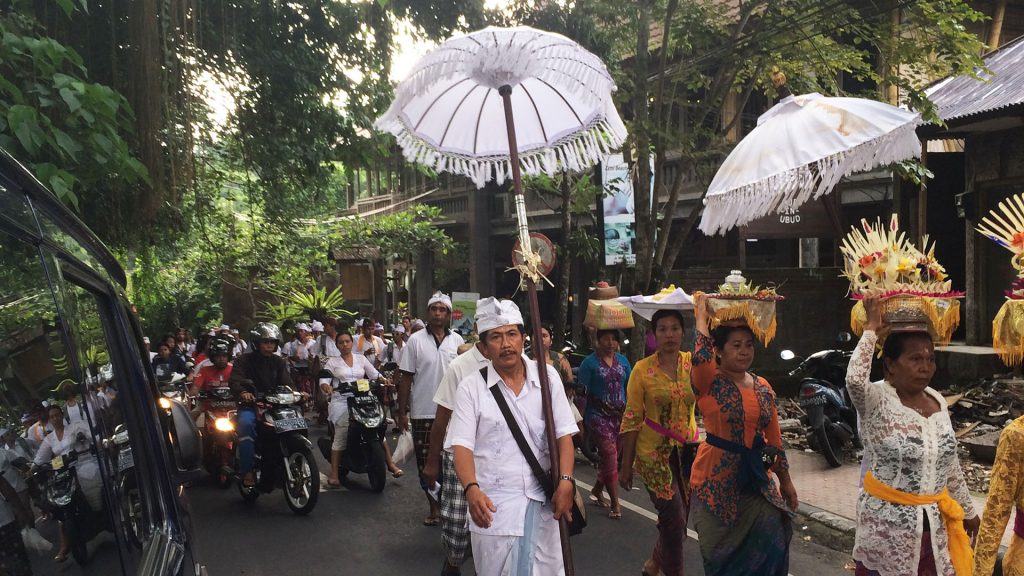
When my partner and I arrived in Ubud, a Hindu town known by locals as the “spiritual heart of the island,” we were awed by the grand meru (towers), adorned statues, shrines, and temples, as well as the elaborate and colorful processions with sounds of gamelan (traditional percussion orchestra music) filling the streets. Celebrations of life, death, nature, ancestors, Hindu gods and deities, and Buddhas can be witnessed daily.
For six weeks, we rented a lovely, small house owned by a very kind and caring Hindi family. It overlooked the rice fields situated in a small village just about 10 minutes outside of Ubud center. They welcomed us with hands pressed together at hearts and heads bowed, Om Swastiastu (“peace and greetings from God”). They treated us as their own family members, and every day, they came wearing colorful patterned sarongs with flowers behind their ears and bija (a few grains of wet rice placed on the third eye). With Canang sari offerings, they waved burning incense and splashed holy water blessings upon the family shrines outside the house and in the rice fields.
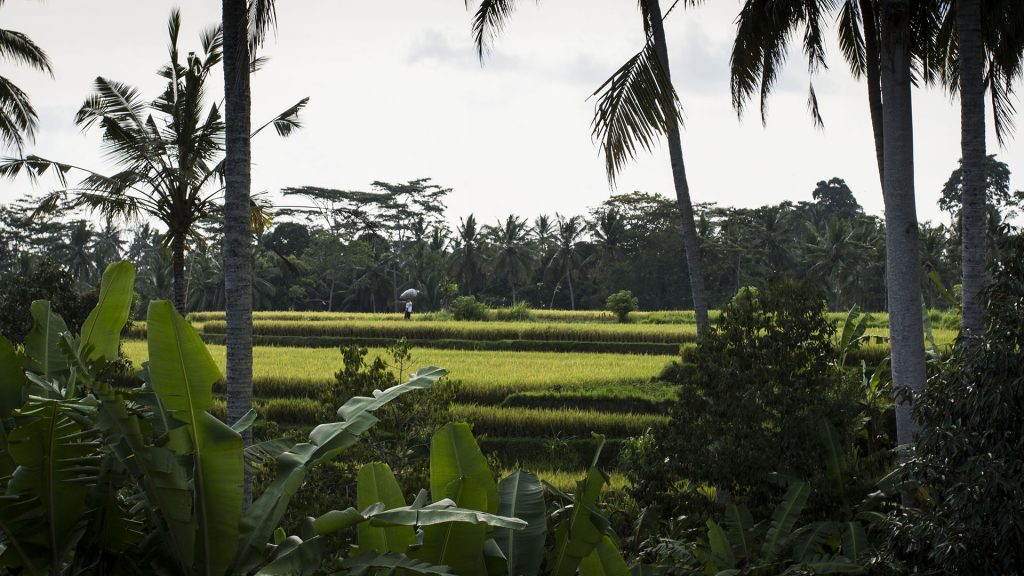
Our eco-living space was open-air, and the living room was lined by a tropical garden. In the rafters lived several geckos and a large lizard who we named Siggy, after Sigmund Freud, because he was always hanging out examining us while we lay on the daybed and liked to leave little presents for us to pick up in the morning. Dragonflies, butterflies, and bees flittered in and out, and our bathtub always seemed to have a trail of marching ants looking for water. Local cats and dogs often came through the house to just say hello, looking for scratches and a little love. Nights were filled with angelic floating fireflies and serenades from choirs of cicadas, crickets, lizards, and frogs.
We were so immersed in nature that when I looked out on the rice fields surrounded by jungle, sprinkled with coconut and banana trees, I thought I might witness an elephant roaming or monkeys hanging from branches, but that was all in the past. But, nestled at the edge of town in Ubud, there is the Mandala Suci Wenara Wana (Sacred Monkey Forest Sanctuary), there, the monkeys still run free. They live by a river ravine and temple, and can be seen sitting along the street or innocently snatching tourists sunglasses and snacks, and once in a while they may even make their way to the outskirts of the jungle near the villages.
Rice in Bali
The main staple of food in Bali is rice; it’s grown three times a year and eaten at every meal. The rice terraces make up the majority of the landscape in Ubud, including our backyard. One day, the village women came to harvest the rice and invited me to join them. Although I was completely unprepared, I gleefully accepted.
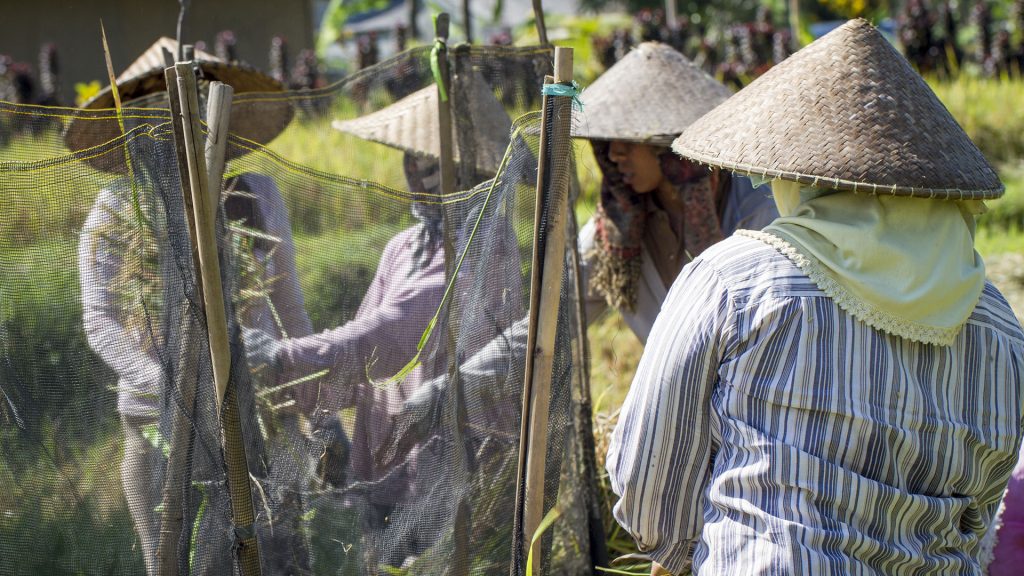
Barefoot, I stepped into the thick, slimy mud, and they handed me a large bundle of rice stalks. As I slapped the long grasses over and over against the side of the big woven basket, I was amazed at how easily the rice fell off. The women laughed at my childish excitement and kept bringing me more until flurries from the rice husks irritated my eyes and caused a coughing fit.
Then they let me try my hand at cutting the stalks with a hand-held sickle but got frustrated with me because I was slowing them down. Realizing I was not cut out for the job, I reluctantly retreated back to my living room where I sat and watched as they cleared the entire field in one afternoon.
On woven bamboo palates, they sifted out the remainder of the grasses, filled large sacks full of rice, and carried them home balanced on their heads. At home, they dumped the rice out on large tarps laid out in the sun to dry.
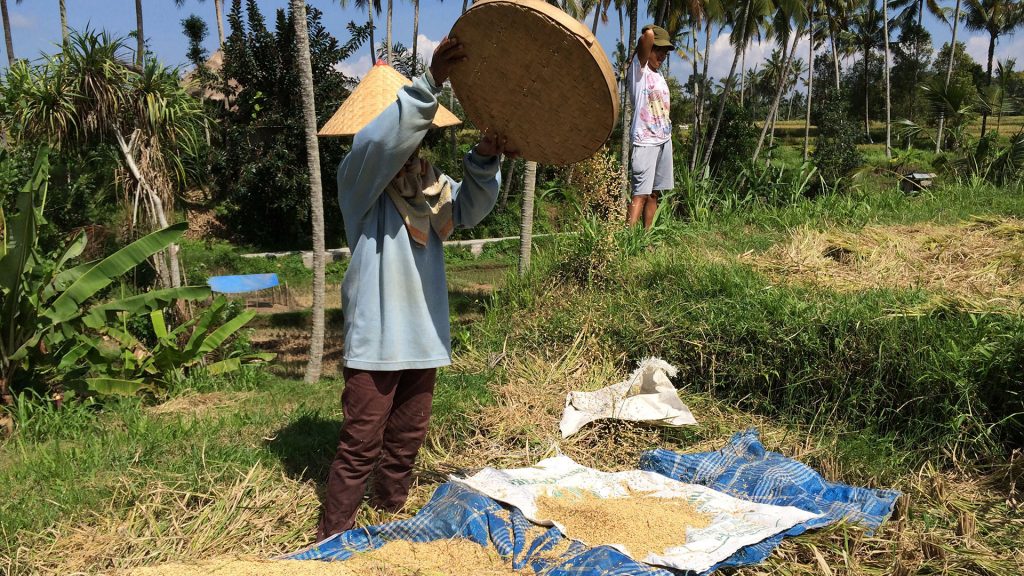
The days following the harvest, a village man came and set fire to the remaining dry grasses and then flooded the rice fields with water channeling from the subak (irrigation), a thousand-year-old canal that runs throughout Bali flowing from natural springs through sacred temples into the villages. Then two young boys came to wade, stuck their arms deep into the water, and started hunting by hand. They filled a bucket with worms the size of small snakes.
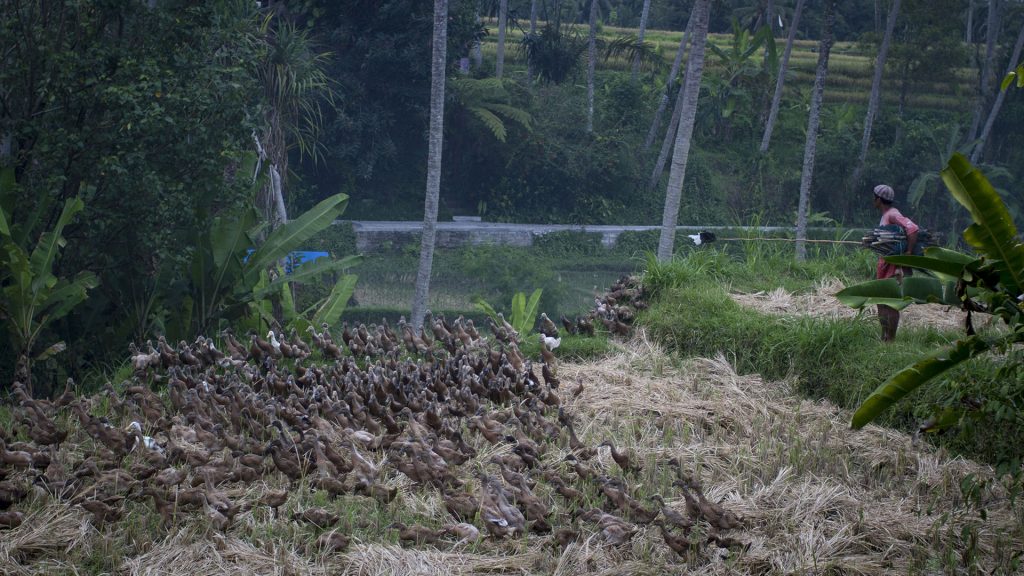
Shortly after a herder, carrying a long staff with a white piece of fabric attached to the tip, ushered hundreds of ducklings into the field to do their share in helping prepare and fertilize the rice paddy for the next the planting.
The ducks waddled in quacking and honking, soon setting to work irrigating the land as they dug their beaks and webbed feet into the watery sludge, gobbling up worms, eels and insects.
Watch Duck Zen Video
When the ducks had completed their work, a couple more men brought a huge ox, pulling a plow and laboriously turned the soil and old roots until the field looked like creamy pudding. The rice paddy was flooded again, and after the mud settled, they planted blessed rice foundlings, filling the fields one by one with perfectly straight rows of green sprouts. Within a week the new grasses began to grow and within a month the stalks were almost fully grown again.
Although the women harvested and the men plowed and planted in this particular village, this is not always the case — everyone helps in the process. Sometimes, whole families worked the rice fields together. We were touched by the immense family and community connection and collaboration.
The continued passing down of Balinese ideals, customs, and rituals from the elders to the young still runs strong in Ubud. But, with technology and the industrialized world luring many of the younger generation into new careers, fewer Balinese young adults are choosing to become rice farmers. Many voiced their concerns about who will tend the rice fields in the future.
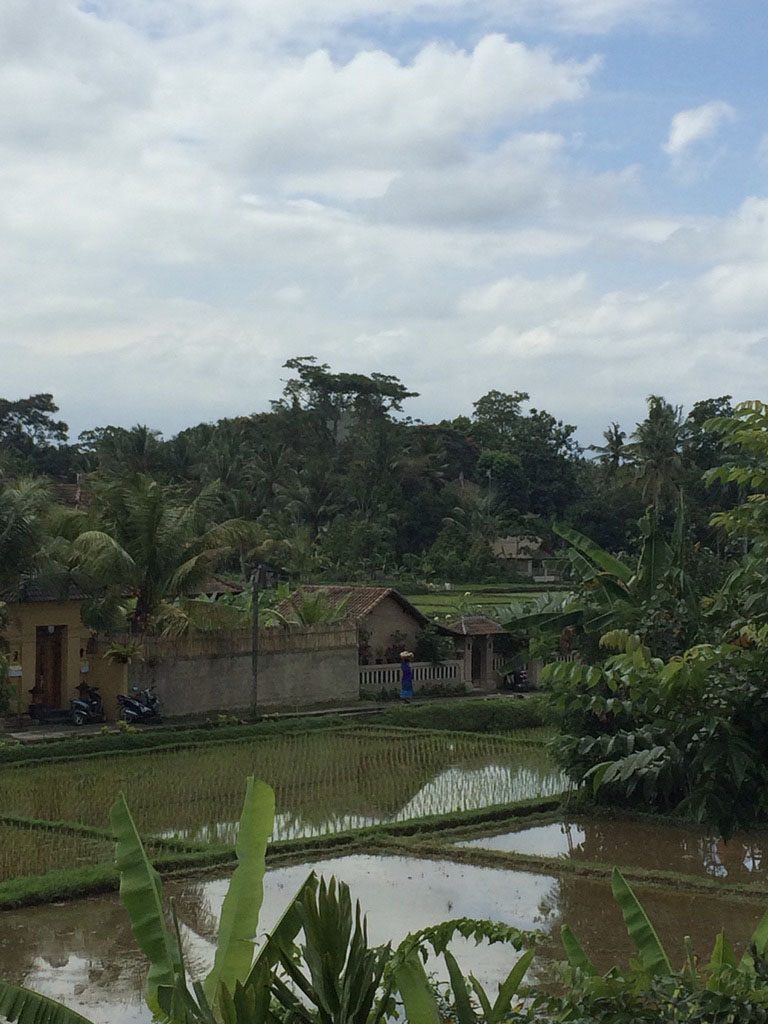
To us it seemed that the Balinese rice farmers were always working in the fields and it was clear that the labor was back breaking and the days long and hot but somehow they always seemed to be smiling. While the rice was growing, they used that time to create amazing handcrafted artwork, silver jewelry, batik and ikat clothing and textiles, wood and stone carvings and intricate paintings depicting landscapes, religious and village life. Maybe they had found the balance in living the way of Tri Hita Karana.
Revised — Story was originally published in OneGlobe Citizen (2016)